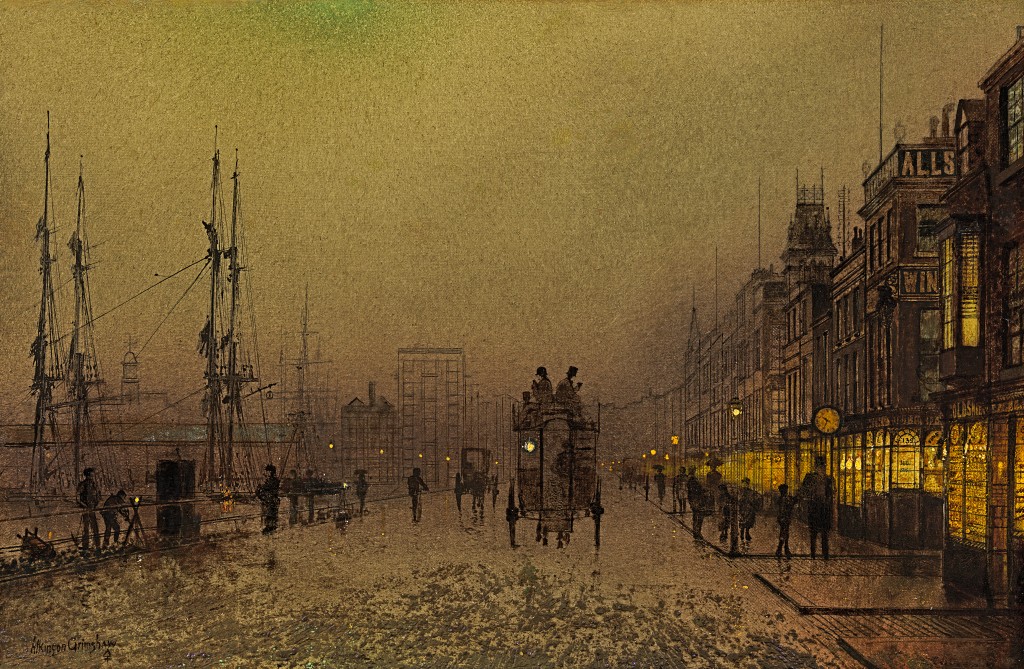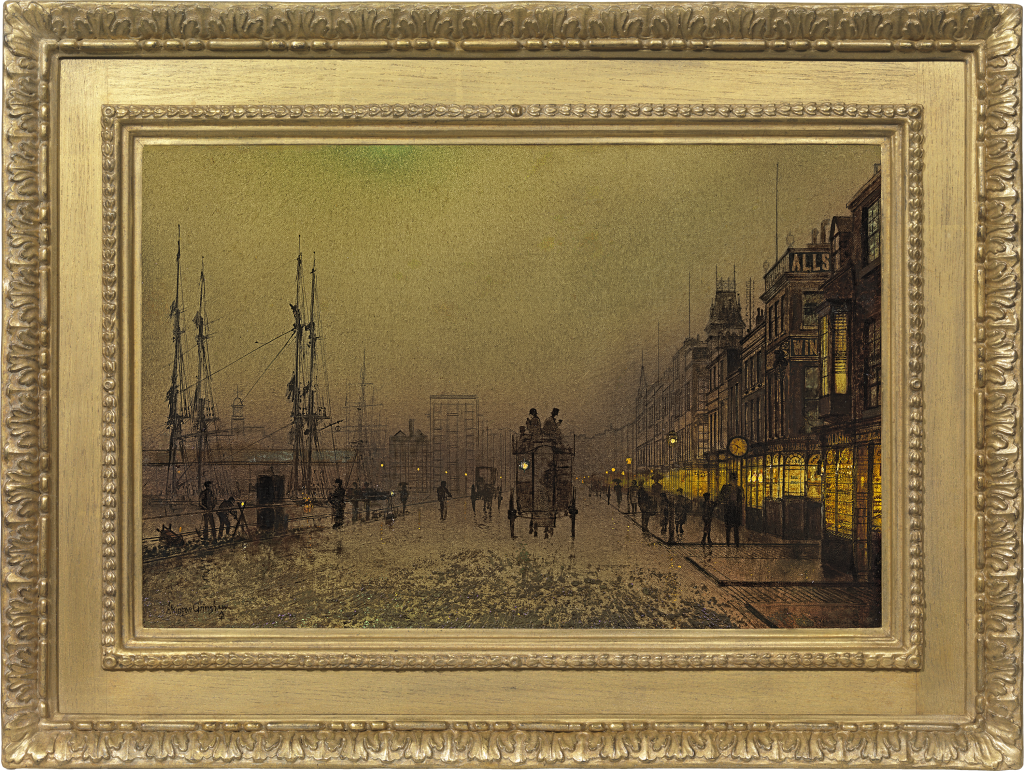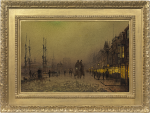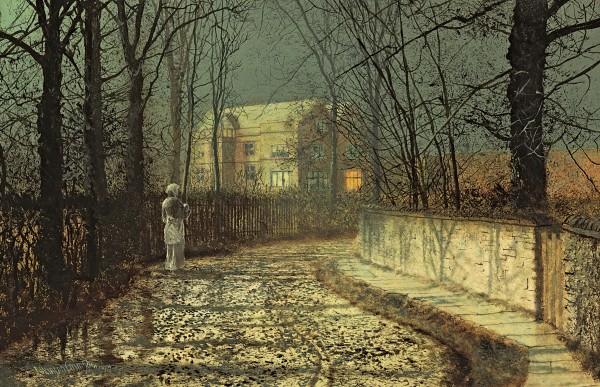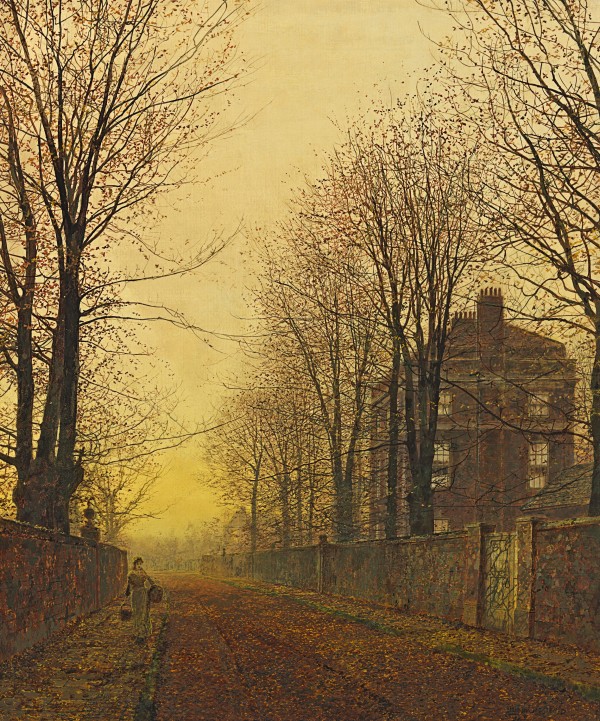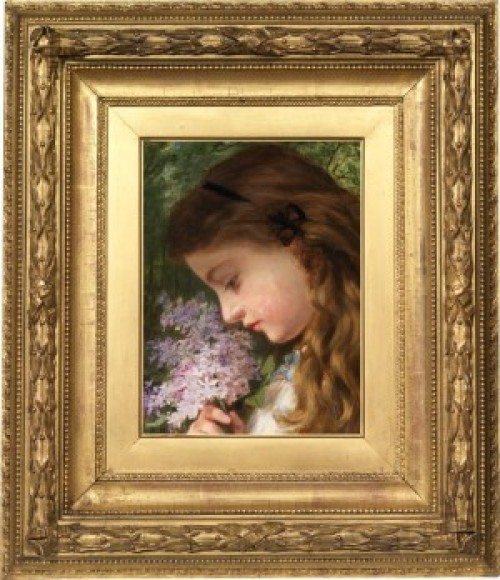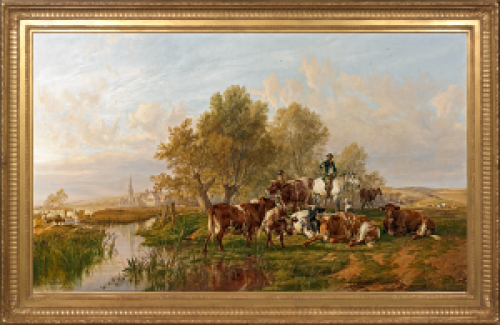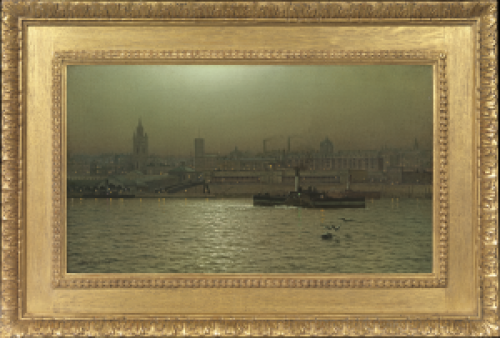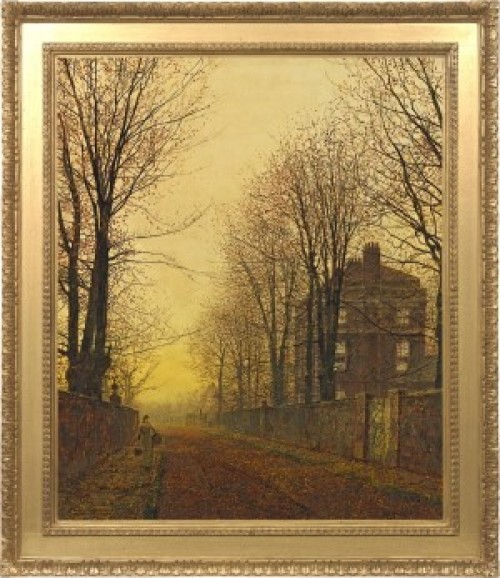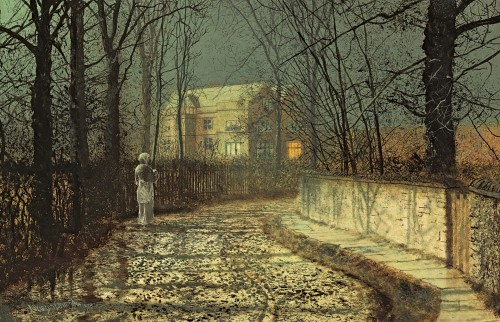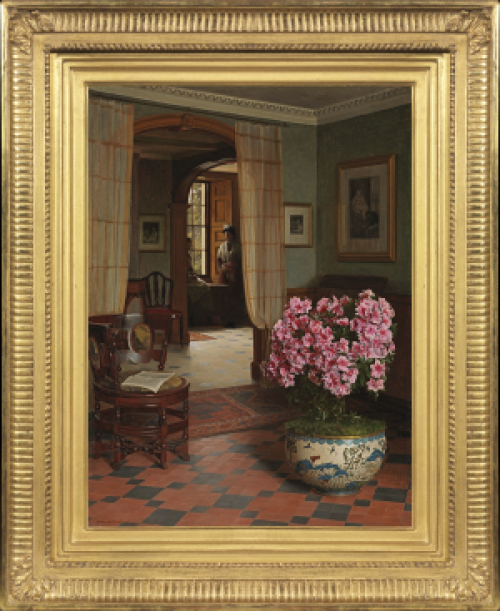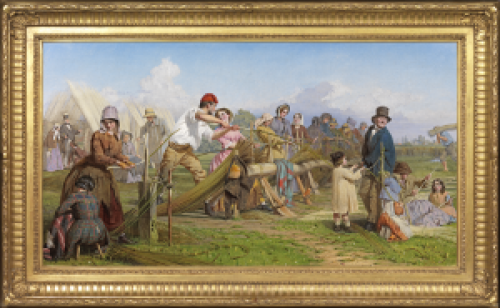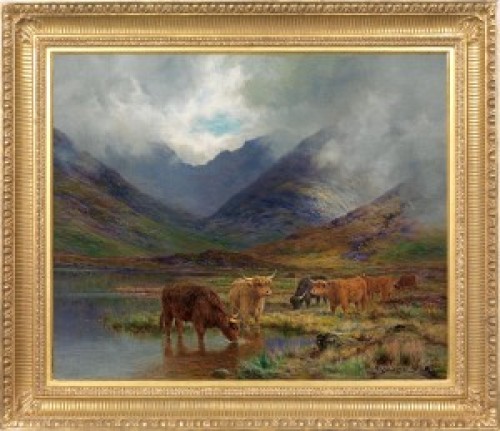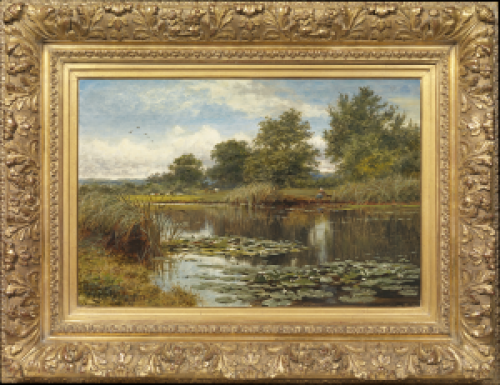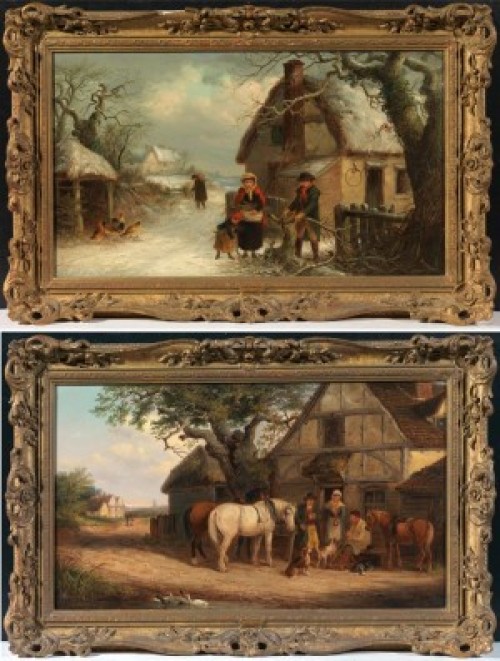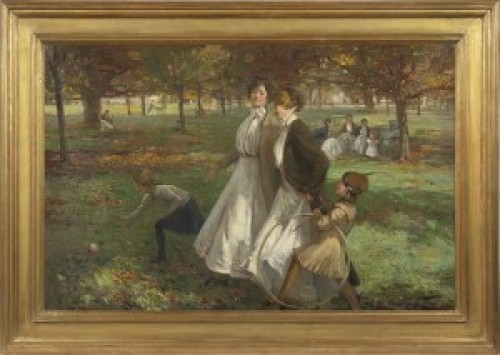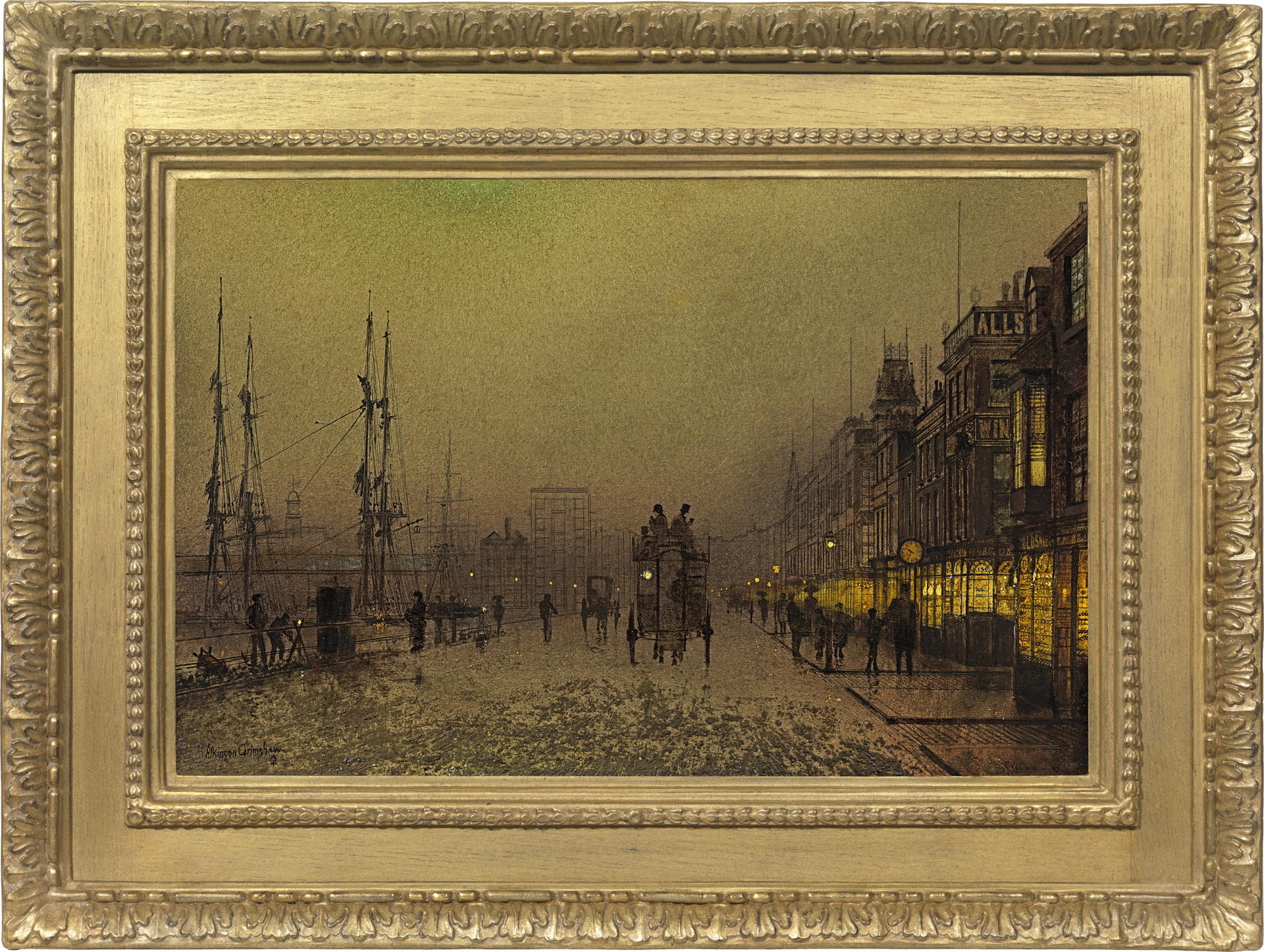JOHN ATKINSON GRIMSHAW
1836 - Leeds - 1893
Ref: CB 234
Glasgow docks, at twilight
Signed lower left: Atkinson Grimshaw; signed and inscribed on the reverse: Glasgow / Atkinson Grimshaw
Oil on canvas: 12 x 18 in / 30.5 x 45.7 cm
Frame size: 18 ¼ x 24 ½ in / 46.4 x 62.2 cm
Provenance:
MacConnal-Mason, London;
private collection, acquired from the above in July 1970
After Liverpool, Glasgow was the most popular setting for Grimshaw’s nocturnal dock scenes. From 1870 onwards the demand for his moonlight representations of northern industrial towns rapidly increased as the new middle-class industrialists sought to become patrons of contemporary art and simultaneously validate their own profession. Confirming the artist’s love of maritime scenes, Grimshaw’s dock views may have been influenced by J.M.W. Turner (1775-1851) and J.A.M. Whistler (1834-1903), who credited the invention of nocturnes to Grimshaw. Glasgow docks, at twilight is a particularly fine and highly detailed example of this Scottish scene and contains all the characteristics of a successful Grimshaw nocturne; the flickering street lights which highlight wet patches of pavement, a horse-drawn coach travelling down the street and the soft lines of ships’ masts silhouetted against the night sky.
Grimshaw achieves an incredible sense of depth in this exceptional work, the vast amount of detail, from items in the shop windows to the gritty yet reflective road, receding with consummate skill into the hazy distance. Grimshaw orchestrates a superb contrast between the bright, inviting lights of the meticulous shop fronts, with the more graphic definition of the mist-covered dock buildings and ships masts along the river Clyde.
John Atkinson Grimshaw was a Victorian artist who became famous for his sombre views of the dockyards and his nocturnal scenes of urban lanes with leafless trees silhouetted against the moonlight sky. During his later life, he became a close friend of James McNeill Whistler who admired his work and admitted: ‘I considered myself the inventor of nocturnes until I saw Grimmy’s moonlight picture.’
JOHN ATKINSON GRIMSHAW
1836 - Leeds - 1893
Born in Leeds, the son of an ex-policeman, Grimshaw first took up painting while he was employed as a clerk for the Great Northern Railway. He married his cousin Frances Theodosia Hubbarde in 1858 and by 1861, he had abandoned his job in order to devote all his time to becoming an artist. In his early work, John Atkinson Grimshaw was influenced by John Ruskin’s creed of ‘truth to nature’ and adopted the detailed Pre-Raphaelite technique of the Leeds painter, John William Inchbold. He was also fascinated by the relatively new art of photography and may have used a camera obscura in developing his compositions.
Towards 1865, he renounced this painting style. He painted many urban scenes in which moonlight and shadows were the most striking features. The towns and docks that he painted most frequently were Glasgow Liverpool. Leeds, Scarborough, Whitby and London. These works have become his best known though he also painted landscapes, portraits, interior scenes, fairy pictures and neo-classical subjects. Grimshaw painted mostly for private patrons. He only exhibited five works at the Royal Academy between 1874 and 1876.
By 1870, Grimshaw had become successful enough to move to Knostrop Old Hall, a seventeenth century mansion about two miles from the centre of Leeds, which featured in many of his paintings. He rented another home near Scarborough which he called ‘The Castle by the Sea’, towards 1876. Grimshaw suffered a serious financial disaster in 1879 and had to leave his house at Scarborough. He moved to London and rented a studio in Chelsea, leaving his family at Knostrop. He returned to Knostrop, where he died in 1893. Several of his children, Arthur Grimshaw (1864-1913), Louis H Grimshaw (1870-1944), Wilfred Grimshaw (1871-1937) and Elaine Grimshaw (1877-1970), became painters.
The work of Grimshaw is represented in the Bradford City Art Gallery, the Shipley Art Gallery, Gateshead, the Gloucester Museum and Art Gallery, the Bankfield Museum, Halifax, the Harrogate Museums and Art Gallery, the Ferens Art Gallery, Kingston-upon-Hull, the Huddersfield Art Gallery, Kirklees Metropolitan Council, the Harris Art Gallery, Preston, the Leeds City Art Gallery, the Walker Art Gallery, Liverpool, the Guildhall Art Gallery and the Tate Gallery, London, the Scarborough Art Gallery, the Wakefield Art Gallery and Museums, the Pannett Gallery, Whitby, the Musée des Beaux-Arts, Brest, France, the Wadsworth Atheneum, Hartford, Connecticut, the Nelson-Atkins Gallery, Kansas City, Missouri, the Minneapolis Institute of Arts, Minneapolis, Minnesota, the Yale Center for British Art, New Haven, Connecticut, the Museum of Art, New Orleans, Louisiana, the Rhode Island School of Design, Providence, Rhode Island in the United States, the Shepparton Art Centre, Welsford, Victoria, Australia and the King George VI Art Gallery, Port Elizabeth, South Africa.


